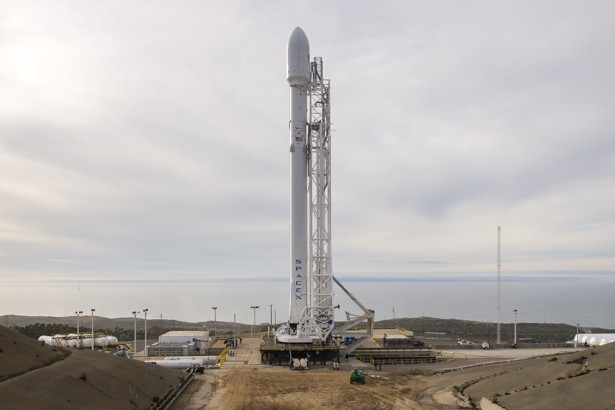
Updated on January 18 at 2:13 p.m. EST
If at first you don’t succeed at landing a rocket on a ship floating in the middle of the ocean, try, try, try again.
That’s the plan for SpaceX, which on Sunday afternoon narrowly missed a full touchdown of its Falcon 9 on an ocean platform in the Pacific Ocean on its return trip from delivering a satellite to space earlier in the day.
“Definitely harder to land on a ship,” tweeted Elon Musk, the billionaire founder of the private spaceflight company. “Similar to an aircraft carrier vs land: much smaller target area, that’s also translating & rotating.”
Musk said that the Falcon 9 successfully slowed down enough to make a solid landing, but one of the rocket’s legs failed to lock, leading the spacecraft to tip over and explode:
SpaceX’s last two attempts at such ocean landings also ended with the rockets exploding.
The company made aerospace history last month, when it launched a Falcon 9 rocket into space and brought it back to Earth in one piece, landing it upright. But that touchdown happened on a launch pad, and not on what is effectively a giant, flat buoy.
The ocean platform—about 300 feet by 100 feet, with wings that add 70 more feet to its width—is equipped with thrusters to help it stay in place in the water, but is not anchored to anything. The Falcon 9 is 14 stories tall and must go from traveling at nearly 1,300 meters per second—or just under 1 mile per second—to just two meters per second before it lands. Stabilizing the rocket for reentry, SpaceX explains, “is like trying to balance a rubber broomstick on your hand in the middle of a wind storm.”
The Falcon rocket successfully carried a U.S.-European satellite from California to low-Earth orbit Sunday morning. Jason-3 will float around 830 miles above the planet, tracking the rate of global sea-level rise, according to the National Oceanic and Atmospheric Administration. Here it is in its new home:
#Jason3 satellite in orbit to monitor sea level rise! Solar arrays deployed & power positive https://t.co/3avbEwM8gFpic.twitter.com/SUL22dTzqs
— NASA (@NASA) January 17, 2016